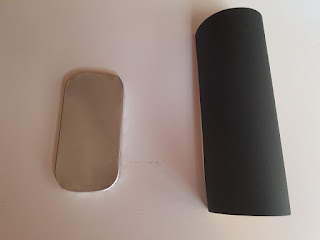The Tray -
The Third task to the course was to turn a 200mm x 110mm rectangle piece of aluminium into a tray by reshaping the edges of the aluminium.
Material:
- 200mm x 110mm Aluminium sheet
Tools used:
- Marking pencil
- Ruler
- Tin snips
- Tapered plastic mallet
- Chasing hammer
- Personalised timber dolly x 2
- Small clamp
- Workbench clamp
Step 1
The first step was to measure and cut the desired aluminium piece. The guillotine was used to get the initial size of the tray, once the sheet was cut it could then be marked to indicate the cutting and bending sections.
Step 2
Once the aluminium sheet was marked and cut into the final stage before hammering, the wooden dolly was then also marked to help align the two sides when clamping the aluminium, this is a crucial step to ensuring the edges are as even as possible. Tip: I used a smaller hand clamp to help hold it all together so precise pressure adjustment could be used to allgin it perfectly.
Step 3
Once the aluminium was lined up between the two wooden dollies properly it was then transfered to a table clamp to ensure it stayed rigid whilst the metal forming could begin. Using a combination of the plastic mallet and the chasing hammer, I could begin bending the edges of the tray in, ensuring each deformation was small and precise to prevent the corners from folding over each other. Once the top half was complete it was then easier to rotate it around to do the bottom half as the dolly remains in place due to the bending of the first half.
Step 4
Finally the trickiest part was to retrive the metal tray by itself. Due to the wood being soft and the corners of the alumiumun folding in so tightly the tray wouldnt slide out on its own. The solution to this was to drill a couple screws into the dolly to be able to wedge the aluminium from the wood.
Final result comparing to another students tray. (My tray is on the top)
Step 5
Sand and polish for a smoother surface finish.

















Comments
Post a Comment